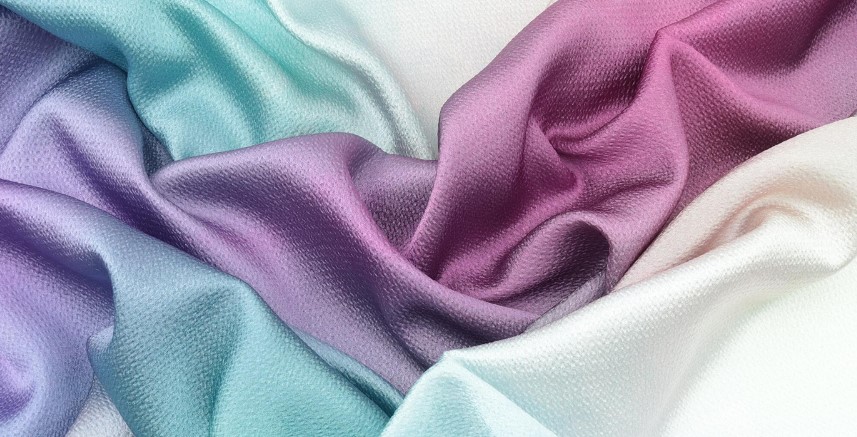
Whether you are designing a custom-fitted shirt or looking to add stretchy cotton fabric to your wardrobe, there are a few things you need to know about these materials. If you plan to print on flexible fabrics, you’ll also want to read up on how to do so using plastisol ink.
Polyurethane
Polyurethane on spandex cotton fabric is a polyurethane coating used as a protective layer over another material. It works similarly to polyurethane sealers used for outdoor furniture. The coating also works as an insulator. It means that the fabric is not affected by water. Polyurethane on spandex cotton fabric can be more durable than polyester.
Polyurethane on spandex cotton fabrics has been used in various applications, including clothing, film, sportswear, and housing insulation. These fabrics have excellent insulating properties and high elasticity. In addition, they are easy to care for. They can be dried in a dryer after being washed in a washing machine. They can be used to create faux-leather fabric versions, but they are less supple than polyester.
Polyester is a synthetic material that can be used to make a variety of fabrics. It is commonly used in clothing and can also be used to make hats, jackets, and trousers. It is also used to make fleece, which has a fluffy texture. It is a cheap alternative to leather. It is resistant to shrinking and wrinkling and is also somewhat breathable.
Polyester is used for sportswear, but it can be used for more practical purposes, like camping gear or jackets. Polyester is durable and stain-resistant but is less soft than polyurethane on spandex cotton fabric.
Lycra
LYCRA spandex cotton fabric is a fabric made from cotton and spandex. This combination of materials is used in many different types of consumer textiles. It is highly resistant to mildew and sunlight. It also has an excellent fit and is a comfortable fabric to wear.
It is usually used for sportswear and form-fitting clothing. However, it is also used in athletic apparel, like running tanks and cycling shorts. It is also commonly found in socks, leggings, and underwear.
It is often a blend of cotton and spandex, resulting in a breathable, soft, and durable fabric. The material also has a high degree of elasticity.
Lycra has long been a favorite fiber for many people. It is resistant to hot water and chlorine and does not pill. In addition, its elasticity allows it to stretch to five or eight times its original size. It can also be blended with other fabrics to create even more elasticity.
The DuPont Corporation developed Lycra in the 1950s. The company has manufacturing locations around the world. It is also employed in the production of paint and wheels for rollerblades. During World War II, German scientists discovered the process of polyurethane. They collaborated with DuPont and created many valuable inventions.
Almost all types of athletic wear and form-fitting clothing contain some elastane. It is used to add stretch to the dress without adding discomfort.
Printing on stretchy fabrics with plastisol ink
Using plastisol ink on stretchy fabrics can be a problem. Inks that are not appropriately cured can cause color loss and poor washability. So the first step is determining the correct temperature and remedy time for the ink. It is essential because plastisol inks should be left in a warm room.
Stretch fabrics are becoming more popular in the fashion industry. For example, athletic jerseys and compression garments are often printed with plastisol inks to achieve moisture-wicking benefits. Phthalate-free inks are ideal for these types of fabrics because they resist cracking.
If you’re printing on stretchy fabrics, you need to use an ink series specially designed for this type of garment. It will ensure that your print lives up to its full potential.
Using suitable additives can also help prevent damage to your print. For example, you can add a dulling or suede additive to help control plastisol ink’s tendency to fade. However, adding too much of an additive can also reduce the opacity of your print.
If you’re printing on stretchy garments, consider using water-based ink. These are designed to offer a smoother, softer print and give you more flexibility. Water-based inks have a lower cure temperature than plastisol ink. They also give you a clean image.
Impact of spandex on the environment
There are crucial considerations to make whether you’re purchasing spandex cotton fabric or recycling it. First, spandex is a synthetic material. It is made from non-renewable resources like fossil fuels. The use of these resources causes pollution and global warming. It also contributes to deforestation.
Some of the chemicals used to make spandex are toxic. For instance, the dyes used in spandex fabric are harmful to aquatic life. Synthetic dyes may also end up in the food chain.
Some spandex When it comes to the environmental impact of spandex, there is a complex solution. Some companies are redesigning the production process. Others are using natural dyes. And some companies blend spandex with sustainable fabrics.
Synthetic garments are also a huge contributor to air pollution. Some studies have shown that synthetic garments may cause dermatitis and dermatitis-related illnesses. Also, synthetic garments release carbon into the air, a greenhouse gas. And the production of synthetic fabric uses 1.35 percent of the world’s oil resources.
The process of manufacturing spandex fabric uses a lot of chemicals, including synthetic dyes. Unfortunately, some of these chemicals are toxic, like MDI, Toluene-2,4-diisocyanate (TDI), and phthalates. These chemicals are carcinogenic and pose health risks to consumers.
Another environmental concern is the waste produced by spandex fabric production. Approximately 60 percent of the trash in the U.S. comes from textile fibers, many of which are non-biodegradable.
